Moon rise, our first evening in Fulaga.
The final and most southerly of the Lau group of islands is Fulaga - we had heard so much about how wonderful is was, we were keen to see if it could possibly live up to it’s reputation! We arrived after an overnight sail from Vanua Balavu, finally sailing with the light from a full moon. Unlike Vanua Balavu, Fulaga is a a low lying limestone island surrounded by a coral reef - erosion has caused the formation of wonderful mushroom shaped islets throughout the lagoon.
Google Earth image of Fulaga, showing the land and surrounding reef. The second picture shows the outline of the land and islands from our chartplotters - yet again, relying solely on the chart would not be a good idea! The purple line is our track - first into the anchorage nearest the village, then across the lagoon near to the pass.
In the traditional communities on Fiji, the first thing a visitor must do is head ashore and find the Chief or Village Headman to present Sevusevu (Cava) and be formally welcomed to the village. On this occasion we were allocated a host Family - in our case the Chief himself. He invited us to walk round the village and prepared a coconut for us to drink. He also explained that due to the porous limestone ground although they can grow bananas, papaya and various other fruit and veg, the crop that grows exceptionally well is the coconut - the average yield for a coconut palm is 35 coconuts per year, in optimum conditions you could get 70 - in Fulaga not only are they huge, but there must have been 100 on one tree alone.
Birgit and I enjoying coconut - first you drink the juice, then use part of the shell as a spoon to eat the soft young coconut inside.
A treat enjoyed by the children as well.
The village is very tidy, but also basic - the houses are all corrugated tin, although many do have bottled gas for cooking, they use this as a back up, preferring to cook on open wood fires in one end of the house with a well ventilated, raised domed roof serving as a chimney.
Fulaga is the only island we have visited where cruisers are asked for a FJ$50 (approx £20) donation per yacht for community projects - although very remote, they do get about 90 yachts visiting per year. Apart from this contribution, they support themselves with wood carving, a male only preserve, and mat weaving for the women.



The carvers all work sitting on the floor, using very rudimentary tools - held together with fishing line.



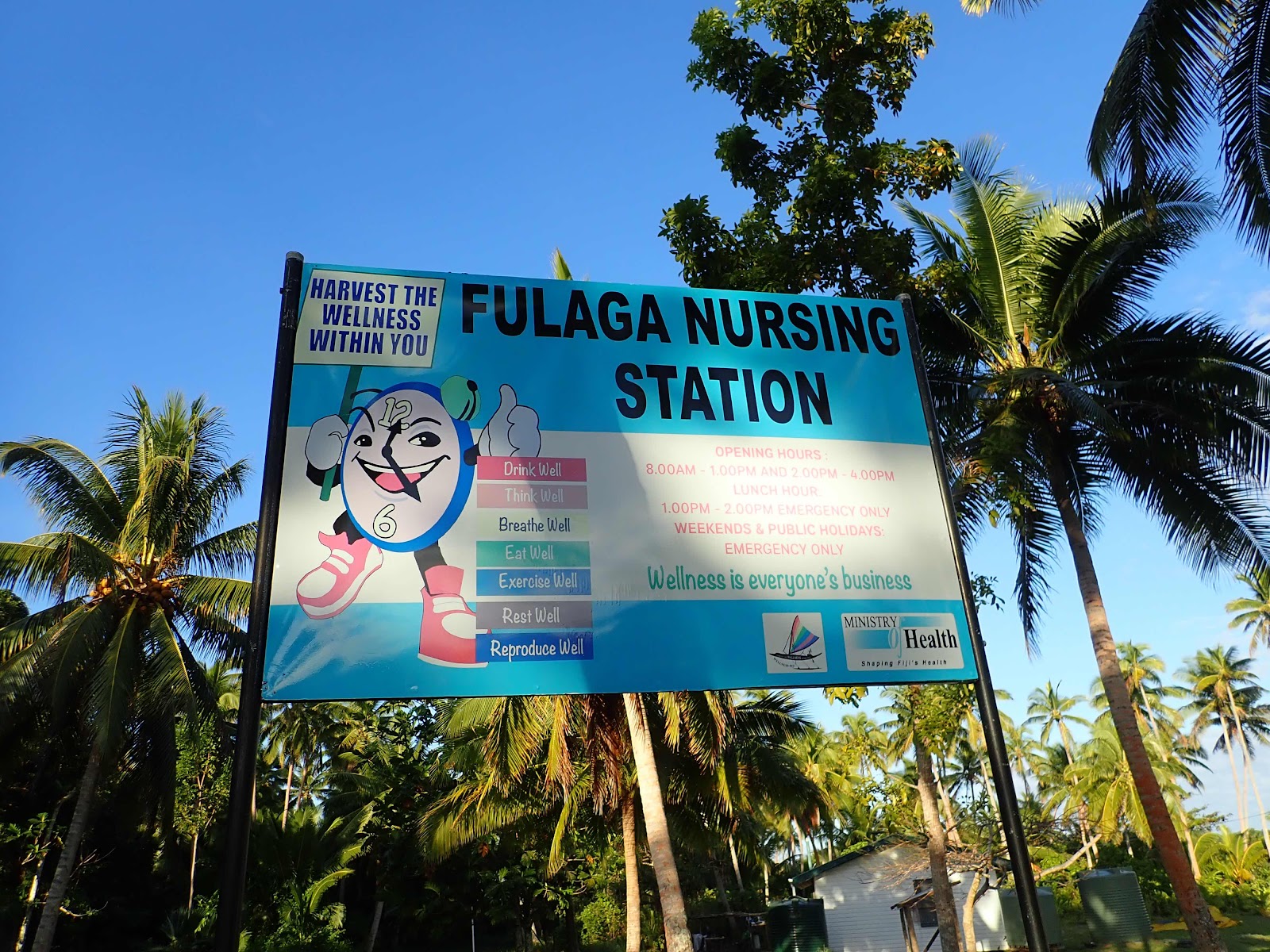
The carvers all work sitting on the floor, using very rudimentary tools - held together with fishing line.
We wanted a Nautilus shell carved into one of the bowls - the one we’d chosen had been made in the next village - Ian was wearing a t-shirt with our boat logo on, the carver wanted to copy it - so borrowed the shirt, and loaned one of his own to Ian so we could walk round the village while he worked., sitting cross legged on the floor surrounded by evidence of his wife’s mat weaving activities. Apparently this South African Springbok shirt was one of his favourites.
The Village Shop - flour, yeast, Chinese noodles, tinned fish and very little else for sale. The cargo ship comes once a month and clearly hasn’t been for a while!
The Medical Centre, but no Doctor. Follow the advice: Drink well, Think well, Breathe well, Eat well, Exercise well, Rest well and finally Reproduce well! The island only has a primary school, those who chose to go on to secondary school have to go to Suva on the main island - many stay there to work and don’t return to the island. They may be following the advise, but they’re doing it elsewhere - the island population is still falling.
There are no cars on Fulaga, the villagers usually use fibreglass ‘longboats’ with 40 hp outboards to fish and visit the other villages but there are a few very overgrown walking tracks hidden in the hills. A young local guided us up to the high spots for a view over the lagoon.








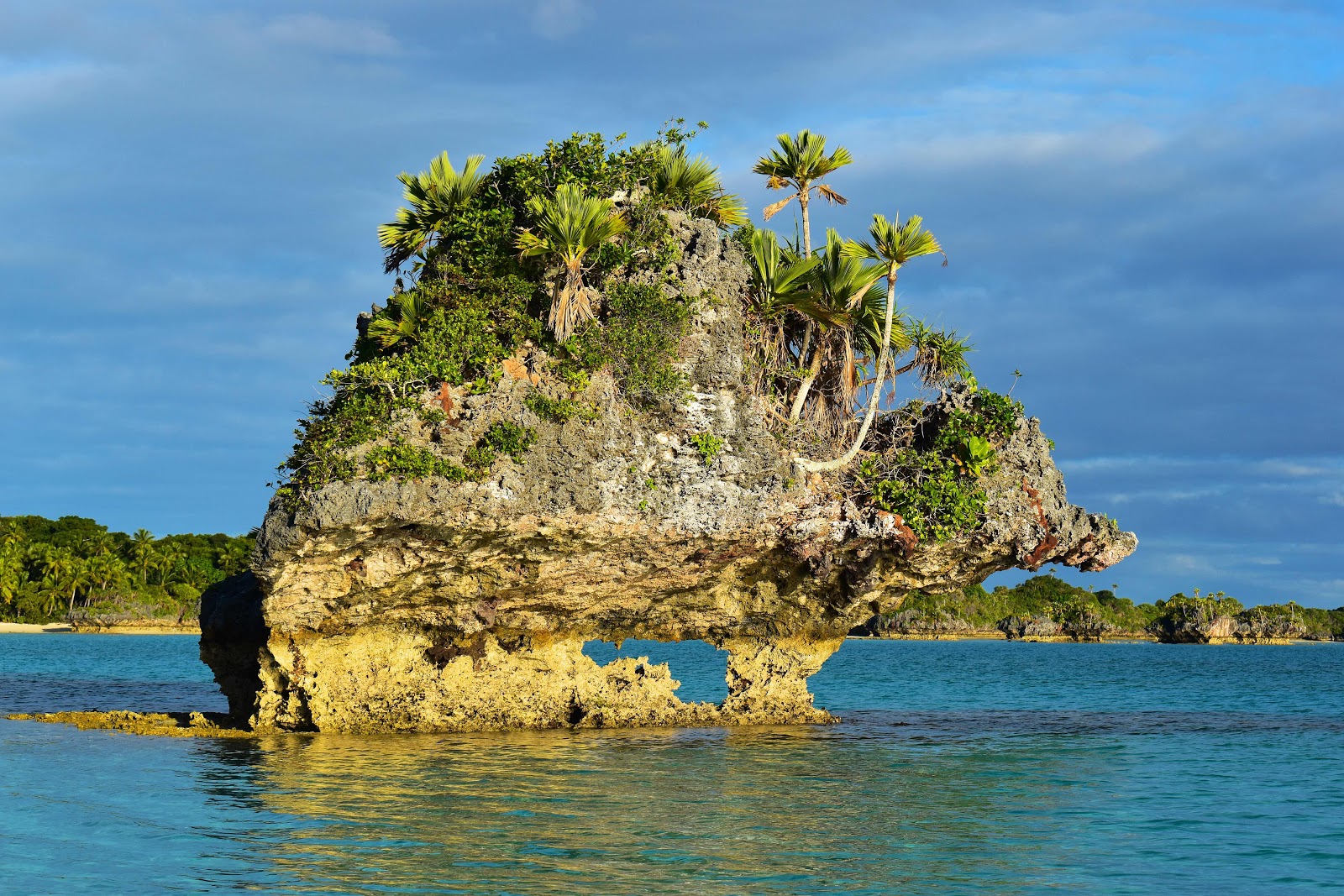



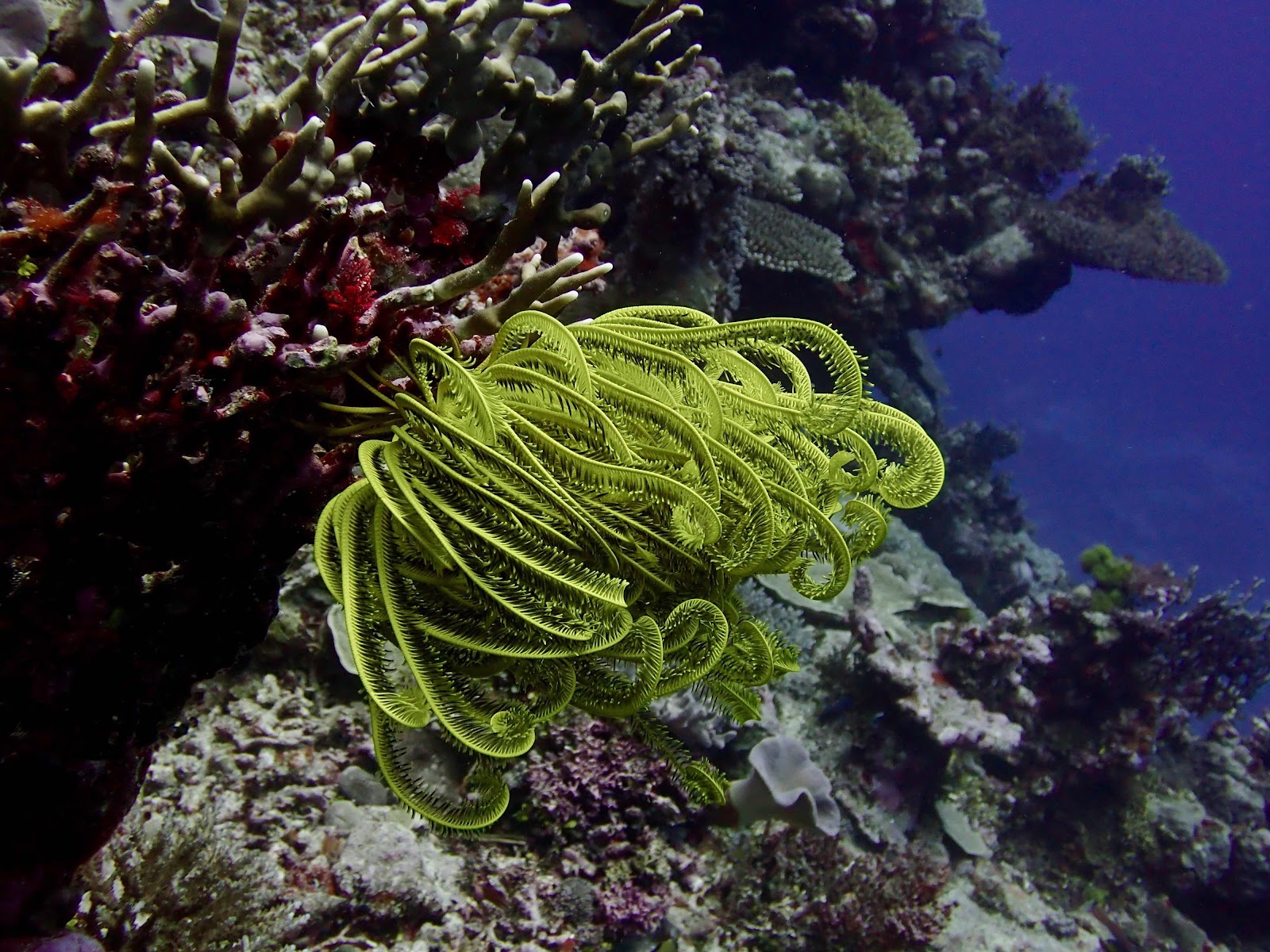

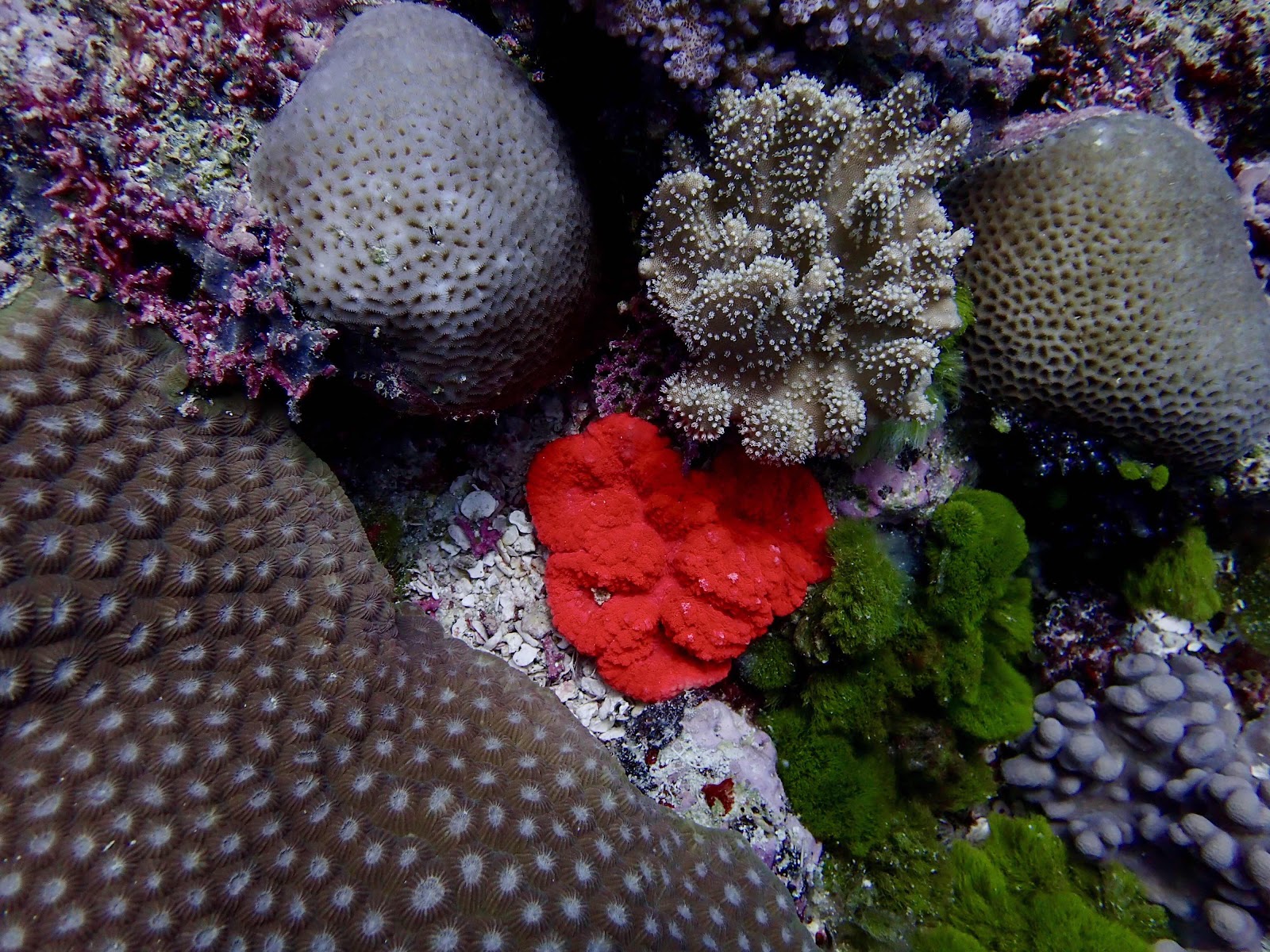

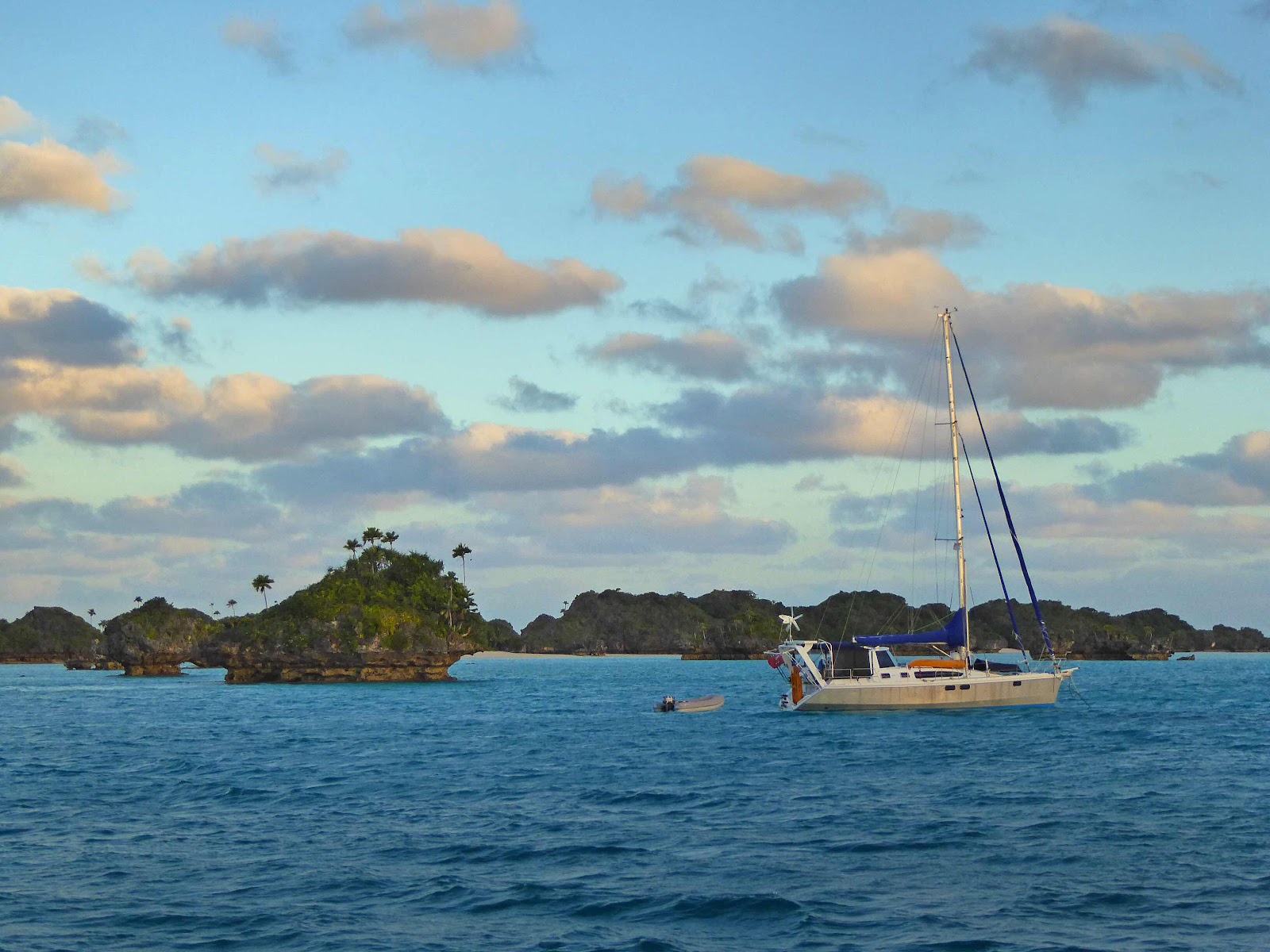

There is no way we would have found the ‘track’ without him.
Our walk took us past this small cave, which contained human bones and skulls - our guide told us they were the bones of the ancestors but later we asked the Chief about them and he said the bones were the remains of cannibal feasts.
The view from the top of the hill - you can see the surf breaking all round the island on the outer reef and the shallow turquoise water in the lagoon. The village is down there near the beach.

Looking down into the lagoon, we are one of 4 yachts at anchor and you can see anchored amongst the islets.
From the top of the hill you can’t appreciate the wonder of the limestone islets in the lagoon - they are just fantastic.
There are literally hundreds of these islets of all shapes and sizes, eroded away by the sea. It is amazing how the palm trees and other greenery manage to survive on what seems to be bare rock.
Of course we managed to do a few dives on the edge of the fringing coral reef by the pass - twice Birgit from the Yacht Rebell came with us and looked after our dinghy, but otherwise we just tow it along with us. That way we can be sure of finding it at the end of the dive, regardless of current and wind.
Diving from our dinghy - we each have a line on a reel to make sure it’s still with us at the end of the dive.

Looking up through 20 metres of water - Birgit with the dinghy.
Looking up through 20 metres of water - Birgit with the dinghy.
Scuba diving - A few photos of the reef.
Nautilus anchored in the lagoon.
You don’t get all that lush vegetation on land without a lot of rain - and it certainly did rain while we were in Fulaga, in fact it rained at some stage almost every day but that is what made it a tropical paradise!
Making our way towards the main Fiji island of Viti Levu our next stop will be Matuku, the last of the really remote islands that we plan to visit this year.

Good to hear your exploits - Lynne and Steve are looking forward to meeting up with you both in NZ!
ReplyDeleteGraham & Sheila